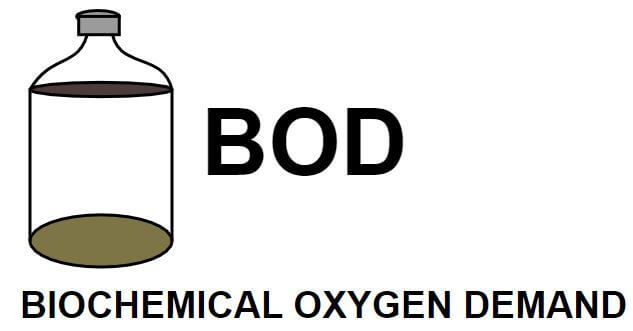What is the full form of BODBOD: Biochemical Oxygen DemandBOD Stands for Biochemical Oxygen Demand. It refers to the volume of dissolved oxygen that microorganisms in water use up during the biological process of metabolizing organic molecules. A sample's biochemical oxygen demand can also be used to estimate how much organic material is present. Measurements of organic wastewater pollution are made using biochemical oxygen demand (BOD). A greater Biochemical Oxygen Demand score indicates that the water is contaminated and has a low content of dissolved oxygen. It is also known as biological oxygen requirement. It is the quantity of dissolved oxygen required by aerobic biological organisms to decompose organic material contained in a given water sample at a given temperature over a particular time period. The Biochemical Oxygen Demand value is frequently used as a proxy for the level of organic pollution in water and is most frequently stated in milligrams of oxygen used per liter of the sample during 5 days of incubation at 20 °C. BOD can be used to evaluate the efficiency of wastewater treatment facilities. The U.S. Clean Water Act lists it as a typical contaminant 
Biochemical Oxygen Demand and Chemical Oxygen Demand both assess the concentration of organic molecules in water, and this is how their respective functions are comparable. Total biochemical oxygen demand is the quantity of oxygen needed to oxidize organic materials to carbon dioxide and water over ions of microbiological development, death, decay, and cannibalism (total BOD). Compared to water quality, total BOD has a greater impact on food webs. The initial aquatic microbial population explosion in response to a significant amount of organic material is most likely to become noticeable when dissolved oxygen deficiency occurs. But if the microbial population deoxygenates the water, that shortage of oxygen limits the population growth of aerobic aquatic microbial organisms, resulting in a longer-term food excess and oxygen deficit. Sources Of Biochemical Oxygen Demand (BOD)
Biochemical Oxygen Demand (BOD) usage in wastewater treatment facilities
Importance Of Biochemical Oxygen Demand (BOD)Biochemical Oxygen Demand is a measurement of how much oxygen is used by microorganisms in the process of decomposing organic matter in water bodies.
Next TopicFull Form
|
 For Videos Join Our Youtube Channel: Join Now
For Videos Join Our Youtube Channel: Join Now
Feedback
- Send your Feedback to [email protected]
Help Others, Please Share










